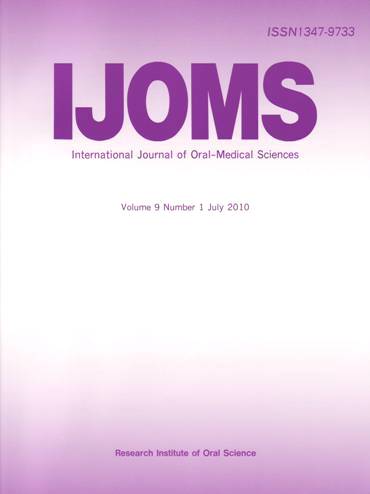Volume 12, Issue 4
Displaying 1-8 of 8 articles from this issue
- |<
- <
- 1
- >
- >|
Original Articles
-
2014 Volume 12 Issue 4 Pages 209-215
Published: 2014
Released on J-STAGE: July 31, 2014
Download PDF (1182K) -
2014 Volume 12 Issue 4 Pages 216-224
Published: 2014
Released on J-STAGE: July 31, 2014
Download PDF (9765K) -
2014 Volume 12 Issue 4 Pages 225-229
Published: 2014
Released on J-STAGE: July 31, 2014
Download PDF (118K) -
2014 Volume 12 Issue 4 Pages 230-234
Published: 2014
Released on J-STAGE: July 31, 2014
Download PDF (103K) -
2014 Volume 12 Issue 4 Pages 235-238
Published: 2014
Released on J-STAGE: July 31, 2014
Download PDF (328K) -
2014 Volume 12 Issue 4 Pages 239-244
Published: 2014
Released on J-STAGE: July 31, 2014
Download PDF (2269K)
Case Reports
-
2014 Volume 12 Issue 4 Pages 245-250
Published: 2014
Released on J-STAGE: July 31, 2014
Download PDF (4201K) -
2014 Volume 12 Issue 4 Pages 251-255
Published: 2014
Released on J-STAGE: July 31, 2014
Download PDF (1860K)
- |<
- <
- 1
- >
- >|
